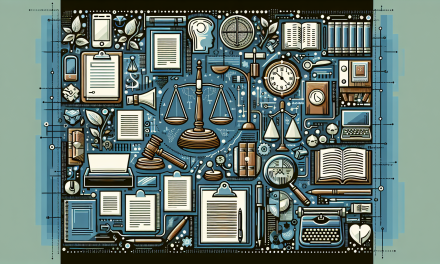Table of Contents
- 1. Introduction
- 2. Understanding Contract Cost and Price Analysis
- 3. Importance of Contract Cost and Price Analysis
- 4. Skills Acquired through Effective Analysis
- 5. Best Practices in Cost and Price Analysis
- 6. Advanced Techniques for Effective Contract Management
- 7. Resources for Further Learning
- 8. Frequently Asked Questions
- 9. Conclusion
1. Introduction
In the intricate world of contracting, understanding the nuances of cost and price analysis remains vital. Professionals engaged in contracting often grapple with challenges surrounding budgeting, resource allocation, and pricing strategies. Grasping the principles of effective cost and price analysis not only enhances budgeting accuracy but also ensures resource allocation aligns with project goals. As businesses strive to maximize their operational efficiency, having a well-rounded comprehension of contract cost and price analysis holds significant value.
2. Understanding Contract Cost and Price Analysis
At its core, contract cost and price analysis involves examining and evaluating the components that contribute to the total costs associated with contracts. It encompasses a thorough understanding of direct costs, indirect costs, fixed and variable expenses, and how these factors collaborate to influence a project’s financial outcome. This process aids professionals in negotiating better rates, managing budgets effectively, and ensuring compliance with regulatory standards.
Key Components of Cost and Price Analysis
- Direct Costs: These are costs that can be directly attributed to a specific contract or project.
- Indirect Costs: Costs that cannot be directly linked to a single contract but are necessary for the contract’s execution.
- Fixed and Variable Costs: Understanding the difference between these costs is crucial for accurate forecasting and budgeting.
- Market Analysis: Evaluating market trends and benchmarking against competitors enhances the understanding of reasonable pricing models.
3. Importance of Contract Cost and Price Analysis
Performing cost and price analysis has transformative implications for organizations. Firstly, it facilitates effective budget management, preventing potential overspending and ensuring the sustainability of projects. Secondly, it enhances decision-making processes, as having robust data allows management to make informed choices that align with organizational goals.
Benefits of Effective Cost and Price Analysis
- Improved Negotiation: Armed with accurate data, professionals can negotiate better terms with suppliers and contractors.
- Risk Mitigation: By understanding cost structures, organizations can identify potential risks and establish contingency plans.
- Increased Accountability: Clear cost breakdowns foster accountability among teams involved in contract execution.
- Enhanced Profitability: Ultimately, effective analysis contributes significantly to an organization’s bottom line.
4. Skills Acquired through Effective Analysis
Mastering contract cost and price analysis develops a plethora of skills crucial for career advancement. Professionals immersed in this practice acquire analytical skills that empower them to dissect complex data and derive actionable insights. Additionally, they learn negotiation skills that aid in securing favorable contract terms and prices, enhancing their value within the organization.
Essential Skills Developed
- Analytical Thinking: Cultivating the ability to analyze cost data critically enhances decision-making capabilities.
- Attention to Detail: Working with financial data demands meticulous attention to avoid costly oversights.
- Financial Acumen: A broad understanding of financial principles ensures that professionals can navigate complex financial environments.
- Effective Communication: Articulating complex cost structures and analysis results becomes paramount in negotiations.
5. Best Practices in Cost and Price Analysis
Adhering to best practices while performing cost and price analysis promotes accuracy and efficiency. To achieve optimal results, professionals should consider the following strategies:
Strategies for Effective Analysis
- Utilize Technology: Leveraging software tools designed for cost analysis simplifies data management and enhances accuracy.
- Continuous Learning: Stay updated with industry trends and methodologies to refine analytical techniques.
- Collaborative Approach: Involve cross-functional teams to gather diverse insights that contribute to a more comprehensive analysis.
- Regular Review: Periodically reviewing contracts ensures that costs remain in line with market trends and organizational objectives.
6. Advanced Techniques for Effective Contract Management
As professionals advance in their understanding of cost and price analysis, utilizing advanced techniques becomes essential. These methods not only streamline the analysis process but also uncover deeper insights that enhance strategic decision-making. Engaging with advanced frameworks enables professionals to navigate complex project landscapes more effectively.
Key Advanced Techniques
- Cost-Volume-Profit Analysis: Understanding the relationship between costs, sales volume, and profit allows professionals to make more informed pricing decisions.
- Just-in-Time (JIT) Analysis: JIT principles enable organizations to reduce waste and improve efficiency by analyzing costs associated with inventory levels.
- Value Engineering: This technique evaluates the functionality of a project or process versus its cost to enhance value.
- Life Cycle Cost Analysis: Assessing all costs associated with a project throughout its life cycle informs smarter long-term investment decisions.
7. Resources for Further Learning
Expanding knowledge in contract cost and price analysis requires access to high-quality resources. Engaging with reputable articles, publications, and training opportunities can significantly enhance understanding and practical skills.
For a comprehensive dive into cost and price analysis, consider exploring Comprehensive Cost and Price Analysis Training for Contracts. This resource provides valuable insights and practical knowledge.
Here are some additional articles to complement your learning:
- The Ultimate Guide to Mastering Contract and Claim Management
- Mastering Advanced Contracts and Project Management for Success
- Unlocking the Power of Effective Contract Management
- Understanding Contractual Risk: The Role of Insurance and Indemnity Certificates
- Master the Essentials of Contracts and Purchasing
8. Frequently Asked Questions
What is the difference between cost and price?
Cost refers to the total expense incurred to produce a product or deliver a service, while price is the amount customers are willing to pay for that product or service. Understanding this distinction is crucial for effective negotiations and profitability assessment.
Why is cost analysis important in contracts?
Cost analysis is important because it helps ensure that expenditures remain within budget, supports decision-making processes, and enhances negotiation power when dealing with suppliers, ultimately leading to better project outcomes.
How can technology assist in cost analysis?
Technology can assist by providing software solutions that streamline the collection, organization, and interpretation of cost data, allowing professionals to focus more on strategic decision-making rather than manual data entry and analysis.
9. Conclusion
Understanding contract cost and price analysis is essential for anyone engaged in contract management and negotiation. By mastering these concepts, professionals not only enhance their career prospects but also contribute immensely to their organizations’ overall success. Embracing continued learning and adopting best practices is the pathway to becoming a leader in the field of contract management. With the right resources, including a focus on advanced techniques and collaboration, individuals can position themselves as invaluable assets in today’s competitive landscape.





